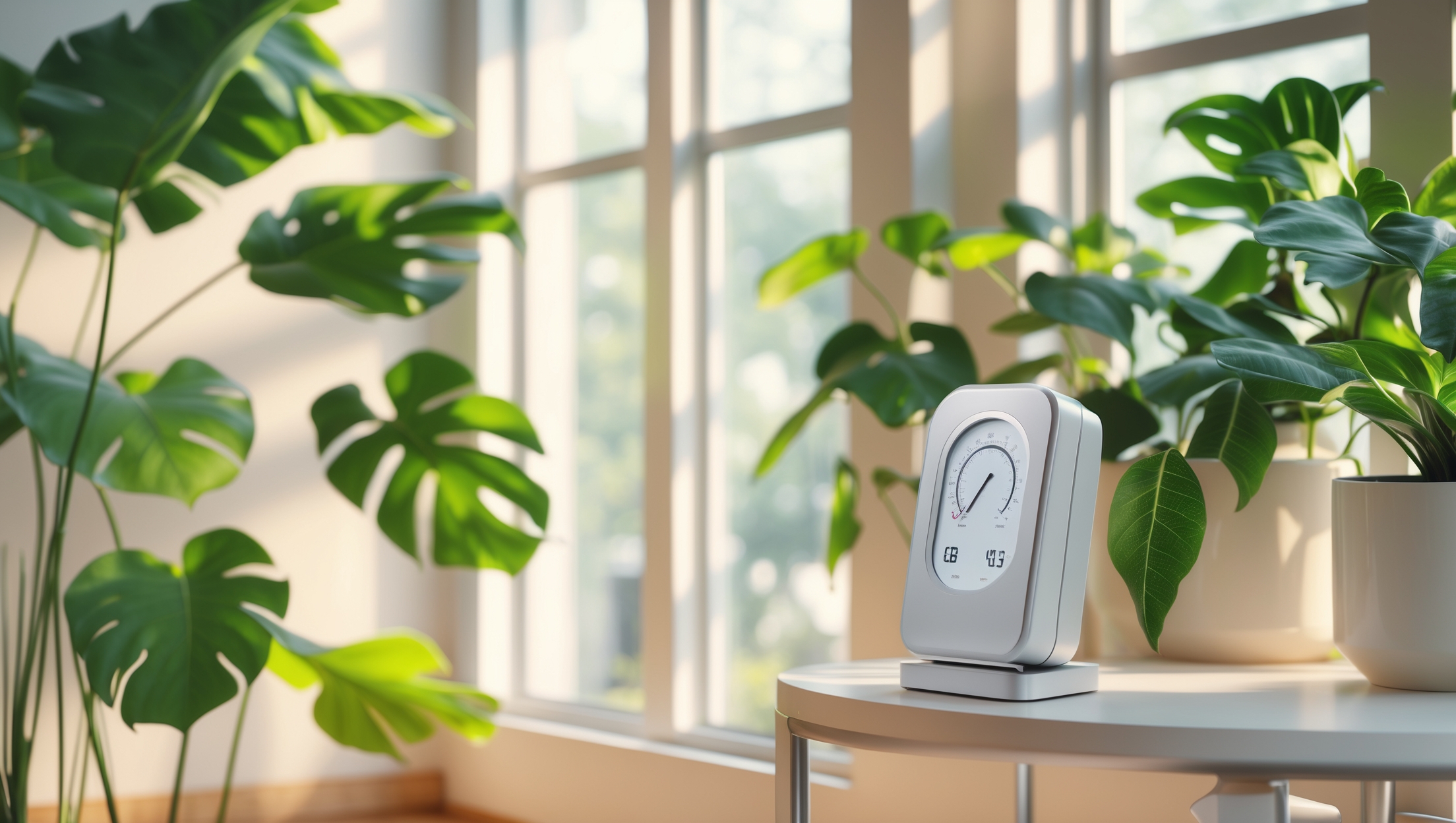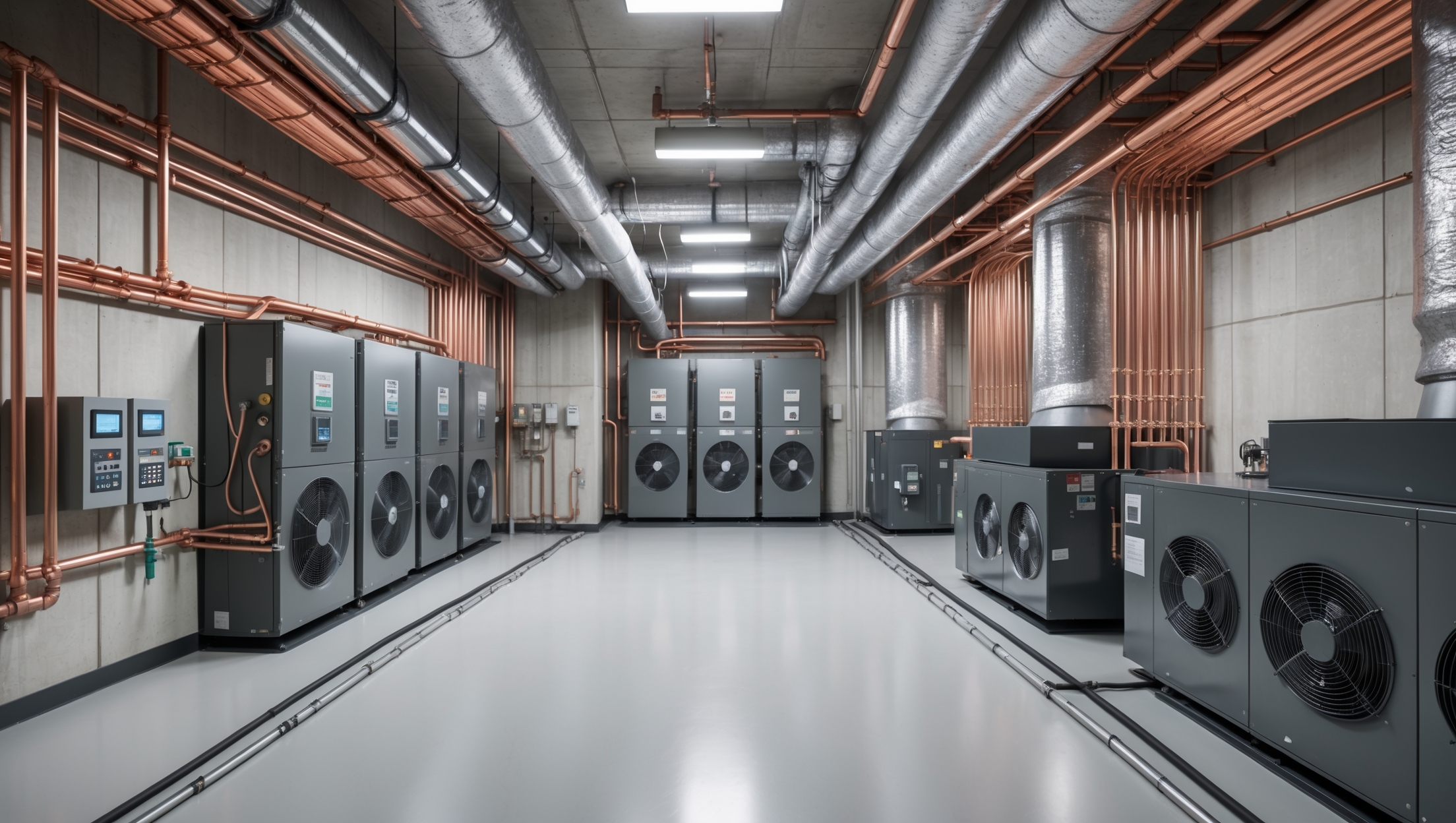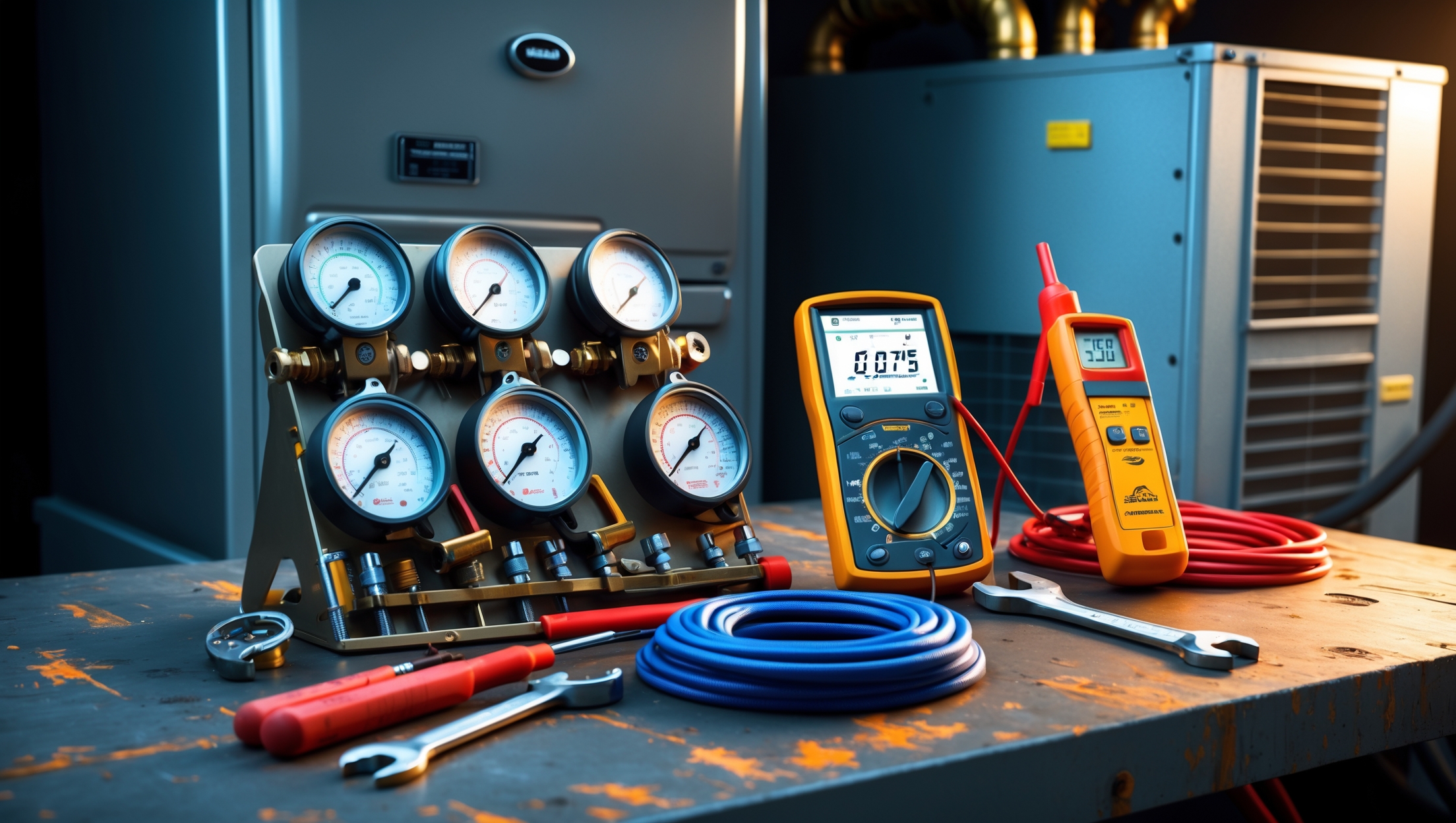Introduction: Why Humidity Control Matters for Every Home
When you think of indoor comfort, temperature is probably the first thing that comes to mind. But there’s another critical factor that often flies under the radar: humidity. Whether you’re a homeowner, contractor, or property manager, understanding and managing humidity is essential for maintaining a healthy indoor environment, protecting your property, and optimizing energy consumption. Out-of-balance humidity can silently trigger allergies, encourage mold growth, warp wood, and even drive up utility bills. The good news? With the right knowledge and tools, keeping humidity in check doesn’t have to be complicated or expensive.
This guide delivers practical insights and actionable strategies for regulating indoor humidity. You’ll learn how to identify and address common humidity problems, select the right equipment, and maintain optimal conditions throughout the year. We’ll also cover the science behind humidity, its impact on indoor air quality and energy use, and step-by-step best practices for every season. Whether you’re new to humidity control or looking to fine-tune your approach, you’ll find expert tips and solutions tailored to real-life homes and properties.
Understanding Humidity: The Basics and Its Impact
What Is Humidity?
Humidity refers to the amount of water vapor present in the air. It’s typically measured as relative humidity (RH), which is the percentage of moisture in the air compared to the maximum amount the air can hold at that temperature. Ideal indoor RH is generally between 30% and 50%—levels above or below this range can create problems for health, comfort, and your property.
How Humidity Affects Health and Comfort
- High Humidity (above 60%): Can promote mold and dust mite growth, cause musty odors, and make the air feel muggy. It can aggravate asthma and allergies and increase the risk of respiratory infections.
- Low Humidity (below 30%): Leads to dry skin, irritated eyes, static electricity, and can worsen symptoms for people with respiratory ailments.
Humidity’s Role in Energy Use and Property Preservation
- High humidity makes cooling systems work harder, increasing energy consumption and utility bills.
- Low humidity in colder climates can cause wood floors and furniture to crack, wallpaper to peel, and musical instruments to go out of tune.
Diagnosing Humidity Problems in Your Home
Common Signs of High Indoor Humidity
- Condensation on windows or walls
- Musty odors, especially in basements or closets
- Mold or mildew spots on ceilings, walls, or around HVAC vents
- Warping or swelling of wood floors or furniture
- Sticky feeling air or persistent clamminess
Common Signs of Low Indoor Humidity
- Cracked or dry skin and lips
- Static electricity shocks
- Cracking or shrinking of wood floors and furniture
- Dry, itchy eyes or throat
- Houseplants with dry, brown leaf edges
Measuring Humidity Accurately
The best tool for assessing indoor humidity is a digital hygrometer. These affordable devices display real-time RH readings and can be placed in multiple rooms for a comprehensive view. For larger properties, consider Wi-Fi-enabled sensors that allow for remote monitoring and alerts.
Best Practices for Controlling Humidity
1. Ventilation: Your First Line of Defense
- Use exhaust fans in bathrooms and kitchens during and after activities that generate moisture (showers, cooking).
- Ensure dryer vents lead outdoors and are not obstructed.
- Open windows when weather permits to increase air exchange—especially after humidity-generating activities.
- Install energy recovery ventilators (ERVs) or heat recovery ventilators (HRVs) in tightly sealed homes for balanced fresh air without major energy loss.
2. Dehumidification and Humidification Solutions
- Portable Dehumidifiers: Great for basements, crawl spaces, or single rooms with persistent dampness.
- Whole-Home Dehumidifiers: Integrate with your HVAC system for consistent, property-wide humidity control.
- Humidifiers: Portable or whole-home units add moisture during dry winter months. Choose units with automatic RH controls to avoid over-humidification.
3. Addressing Root Causes of Moisture
- Fix leaks in plumbing, roofing, windows, and foundations promptly.
- Ensure gutters and downspouts direct water away from the foundation.
- Seal cracks in walls and around windows and doors to prevent moisture intrusion.
- Use vapor barriers in crawl spaces and unfinished basements.
4. Smart HVAC System Operation
- Set thermostats to auto mode so that the fan only runs when cooling or heating, not continuously (which can re-circulate moisture).
- Maintain HVAC systems—replace filters, clean coils, and check condensate drains regularly to ensure efficient moisture removal.
5. Building Materials and Furnishings
- Choose moisture-resistant materials (e.g., tile, vinyl, treated wood) in areas prone to dampness.
- Avoid heavy drapes or carpets in chronically damp basements.
- Use area rugs that can be easily cleaned and dried.
Seasonal Humidity Management: A Year-Round Checklist
Spring and Summer (High Humidity Risk)
- Test and clean dehumidifiers ahead of humid months.
- Check for window condensation and address air leaks.
- Inspect roof, gutters, and downspouts for blockages or leaks.
- Service air conditioning systems; clean coils and replace filters.
- Run ceiling fans to enhance air circulation and comfort.
Fall and Winter (Low Humidity Risk)
- Set up humidifiers and check for mineral buildup or bacteria.
- Monitor RH with hygrometers—adjust humidifiers to maintain 30–50% RH.
- Seal drafts and add weatherstripping to windows and doors.
- Inspect attic and basement for signs of condensation or frost.
- Store firewood outdoors to keep extra moisture out of living spaces.
Choosing and Maintaining Humidity Control Equipment
Dehumidifiers: Selection Tips
- Match the size/capacity to the area (measured in pints per day). Larger, damper spaces need higher capacity units.
- Look for auto-shutoff, built-in pumps, and continuous drain options for convenience.
- Consider ENERGY STAR® rated models for efficiency and lower operating costs.
Humidifiers: Selection Tips
- Console or whole-home models are ideal for large homes; tabletop or portable units suit single rooms.
- Choose ultrasonic or evaporative types for quiet, efficient operation.
- Prioritize models with easy-to-clean tanks and antimicrobial features.
Maintenance Best Practices
- Clean and disinfect humidifiers and dehumidifiers every 1–2 weeks to prevent mold and bacteria.
- Replace filters as recommended by the manufacturer.
- Inspect and clean condensate drains on HVAC systems to avoid blockages and overflow.
- Test equipment at the start of each season to ensure proper function.
Advanced Humidity Control: Smart Technology & Automation
Smart Humidistats and Hygrometers
Modern humidity control is easier than ever with smart humidistats and Wi-Fi-enabled hygrometers. These devices monitor humidity in real-time, provide alerts for abnormal levels, and can even automate humidifiers or dehumidifiers based on current conditions. For property managers, remote monitoring is invaluable—allowing for proactive intervention before humidity issues become costly repairs.
Integrated HVAC Controls
Many modern HVAC systems support integration with smart home platforms. This enables:
- Automatic adjustment of humidification/dehumidification based on occupancy, outdoor weather, or preset schedules.
- Energy optimization routines that balance humidity with heating/cooling needs.
- Remote troubleshooting and diagnostics for contractors and property managers.
Case Examples: Real-World Humidity Challenges & Solutions
Case 1: Tackling Basement Dampness in a Single-Family Home
Problem: Persistent musty smell and visible mold on basement walls each summer. Homeowner used a small portable dehumidifier, but it ran constantly without reducing humidity below 65% RH.
Solution: A whole-home dehumidifier was installed, connected directly to the HVAC ductwork and set to maintain 45% RH. Gutters were cleaned and foundation cracks sealed. Within two weeks, mold growth stopped, odors disappeared, and energy bills dropped as the air conditioner no longer worked overtime.
Case 2: Managing Dry Winter Air in a Multi-Unit Rental Property
Problem: Tenants complained of static shocks, dry skin, and cracking wood floors during winter. Portable humidifiers were inconsistently maintained and often left empty.
Solution: The property manager installed a central whole-building humidifier with automatic RH controls. Regular maintenance was scheduled, and tenants were provided with digital hygrometers for awareness. Indoor air quality improved, tenant complaints dropped, and wood flooring damage was minimized.
Common Humidity Control Mistakes and How to Avoid Them
- Over-humidifying: Setting humidifiers too high can cause condensation on windows and support mold growth.
- Neglecting equipment maintenance: Dirty humidifiers and dehumidifiers can spread bacteria and reduce effectiveness.
- Ignoring source moisture problems: Dehumidifiers can’t compensate for ongoing leaks or structural issues.
- Improper sizing: Using inadequately sized equipment leads to ineffective humidity control and wasted energy.
- Running HVAC fans in “on” mode year-round: This can re-circulate moisture rather than remove it.
Humidity and Indoor Air Quality: The Critical Connection
Managing humidity is not just about comfort—it’s a cornerstone of healthy indoor air quality. Proper RH levels discourage allergens like dust mites and mold, reduce airborne viruses, and help ventilation systems work more efficiently. For households with young children, seniors, or anyone with respiratory issues, humidity control should be a top priority in any indoor air quality strategy.
Conclusion: Take Charge of Your Home’s Humidity for Health, Comfort, and Savings
Humidity control is often overlooked until it becomes a problem, but proactive management pays off in healthier air, lower energy bills, and longer-lasting property. The steps outlined in this guide offer a practical, actionable roadmap for homeowners, contractors, and property managers alike. Start by measuring your home’s humidity with a reliable hygrometer, then address ventilation, equipment, and structural factors. Choose the right humidification and dehumidification solutions for your needs—and don’t forget regular maintenance. Consider leveraging smart technology for hassle-free monitoring and peace of mind, especially in larger or multi-unit properties.
Ultimately, balanced humidity helps prevent health issues, property damage, and unnecessary costs. With consistent attention and the right tools, you can create a safer, more comfortable, and more energy-efficient living environment—year-round. Don’t let humidity go unchecked: take charge today, and enjoy the lasting benefits for you, your family, and your property.




You mentioned that keeping humidity balanced helps reduce allergies and mold, but what are the best low-cost tools or strategies for college students living in small apartments? Are portable dehumidifiers effective enough, or are there better options for renters?
Portable dehumidifiers can be very effective for small apartments, especially if moisture is a concern, and there are many affordable, compact models suitable for college budgets. You can also try using moisture-absorbing products like silica gel or DampRid in closets and bathrooms. Keeping windows slightly open for ventilation when weather allows, using exhaust fans during showers, and avoiding drying clothes indoors can also help control humidity without much expense.
I’m curious about how humidity levels change throughout the year. Are there specific times or seasons when I should be more proactive about checking for issues like mold or dry air?
Humidity levels tend to be higher in the warmer months, especially during summer, which can increase the risk of mold growth. In contrast, winter air is usually drier, leading to issues like dry skin or static electricity. It’s a good idea to check for mold and excess moisture in late spring and summer and watch for overly dry air in late fall and winter.
If my home’s humidity regularly goes above 60% in the summer, what are some affordable ways to bring it back down within the 30% to 50% range without having to buy a big dehumidifier right away?
To lower humidity without a large dehumidifier, try running your air conditioner more often, as it naturally removes moisture. Use exhaust fans in the kitchen and bathroom when cooking or showering. Keep windows closed on humid days, and fix any leaks that might add moisture. You can also try placing smaller, affordable moisture absorbers or desiccants in problem areas to help manage excess humidity.
The article mentions that humidity levels above 60% can cause mold growth and worsen allergies. How often should I check the humidity levels in my apartment to make sure they’re not getting too high, especially during the summer?
During the summer, it’s a good idea to check your apartment’s humidity levels at least once a day, especially during periods of high heat or after activities like cooking or showering. Using a digital hygrometer makes this quick and easy. If you notice readings above 60%, consider using a dehumidifier or increasing ventilation to keep things in a healthy range.
You mentioned humidity can affect things like allergies and even energy bills. If I start noticing musty smells or my utility bills creeping up, what are the first steps I should take to figure out if humidity is the culprit?
If you notice musty smells or higher utility bills, start by checking your indoor humidity with a hygrometer—ideal levels are between 30% and 50%. Look for condensation on windows, damp spots, or mold growth. If humidity is high, use exhaust fans in kitchens and bathrooms, run a dehumidifier, and ensure good ventilation to help control moisture and improve air quality.
You mentioned how too much humidity can cause wood to warp and even drive up utility bills. Is there a certain time of year when these problems are most likely to happen, or does it really depend on where you live in the US?
The risk of wood warping and higher utility bills from excess humidity is usually greatest during the warmer, more humid months—typically late spring through early fall. However, the specific timing can vary depending on your region. In the Southeast or Midwest, for example, high humidity can be a concern much of the year, while in drier climates, it’s mostly a summer issue.
I’m curious about how humidity control ties into energy savings. If I install a dehumidifier or humidifier, will the energy cost balance out with any savings on my heating or cooling bills, or am I just adding another appliance to my electric use?
Managing humidity can actually help your HVAC system run more efficiently. Lower humidity in summer makes your home feel cooler, so you might use the air conditioner less. In winter, a bit more humidity can help rooms feel warmer, so you may be able to turn down the heat. While dehumidifiers or humidifiers do use electricity, the overall effect can balance out or even reduce your total energy costs if used thoughtfully and sized appropriately for your space.
I noticed you talked about humidity influencing energy bills and overall air quality. If my main goal is to reduce utility costs, should I prioritize a dehumidifier, a humidifier, or something else entirely for an older house in a humid climate?
For an older house in a humid climate, prioritizing a dehumidifier is usually most effective for reducing utility costs. High humidity makes cooling systems work harder, increasing energy use. By using a dehumidifier, you help your air conditioner run more efficiently and improve comfort. A humidifier isn’t likely needed in your situation unless indoor air becomes too dry during cooler months, which is uncommon in humid climates.
If the humidity in my house goes above 60% during summer, what are the most effective immediate steps I should take before considering buying new equipment? Are there quick fixes that actually make a noticeable difference?
If your indoor humidity rises above 60% in the summer, try using exhaust fans in bathrooms and kitchens, keep windows closed during humid days, and run your existing air conditioner to help remove moisture from the air. Avoid drying clothes indoors and move houseplants outside, as both add humidity. These quick steps can noticeably improve humidity levels before investing in new equipment.
If someone starts seeing mold or experiencing musty odors at home, what are the first practical steps you recommend for diagnosing whether humidity is the main cause versus something else, based on your advice in the article?
To determine if humidity is behind mold or musty smells, start by checking your indoor humidity with a hygrometer—levels consistently above 60% often promote mold growth. Inspect for visible condensation on windows or walls, especially in bathrooms and basements. If humidity is normal, look for other sources like plumbing leaks or poor ventilation, which can also contribute to these issues.
The article mentions that humidity can warp wood and impact utility bills. If I notice my wooden floors starting to separate or creak more, could that be from low humidity, and how should I fix it before it gets worse?
Yes, wooden floors that separate or creak more can be a sign of low humidity, as dry air causes wood to shrink. To address this, consider using a humidifier to maintain indoor humidity between 30% and 50%. Monitor humidity levels with a hygrometer and try to keep temperature fluctuations minimal. This should help prevent further damage to your floors.
You mention the ideal indoor RH being between 30% and 50%. In colder climates, is it realistic to maintain those levels in winter without risking condensation on windows or walls? Are there best practices for balancing humidity and preventing mold in those conditions?
Maintaining 30–50% relative humidity (RH) in winter can be challenging in colder climates, as higher indoor humidity often leads to condensation on windows and cold surfaces. To balance humidity and prevent mold, use exhaust fans in kitchens and bathrooms, keep air circulating, and use a dehumidifier if needed. Consider lowering your target RH to around 30–40% during very cold spells to minimize condensation risk while still preventing overly dry air.